Greenhouses for growing vegetables all year round: types of construction, material for the frame and cover, heating. Dimensions and supports. Video - How to build a large winter greenhouse
Year-round greenhouse business is a promising undertaking for farmers.
Indoors, you can grow greens, vegetables, flowers, berries.
The choice of crops depends on the region and the level of competition.
It is necessary to consider profitability, volume of investments, the cost of electricity, climate and other important points.
In contact with
- Choosing a culture
- Main costs
- Profitability
Year-round greenhouse as a business
How to grow in a greenhouse all year round? Get harvests whole year possible only during the construction capital winter greenhouses. The structures can be erected on a wooden or galvanized metal frame. Winter greenhouse for business should have a foundation, its thickness depends on the climatic conditions of the region.
Greenhouse in winter as a business covered with polyethylene will cost the cheapest. However, the film coating has several disadvantages: brittleness, poor transparency. The film will have to be replaced every season, which will significantly reduce the profitability of the structure. Film greenhouses suitable for growing moisture-loving crops: cucumbers, tomatoes, peppers. Greens, strawberries and flowers do not need high humidity, which creates a film.
Glazed greenhouses are more durable, but their construction will cost more. For greenhouses need not domestic, but tempered industrial glass, it is much more resistant to weather conditions. Minus glass greenhouses - the excess UV. On hot and sunny days, plants will have to pritenyat to avoid burns.
Perfect option - greenhouse covered with sheets of acrylic or polycarbonate.
They are durable, easy to cut and bend, taking any shape.
Polycarbonate skips the sun's rays, suitable for even the coldest regions.
Suitable for industrial cultivation lean-to designs.
This form provides uniform illumination and does not allow the snow to linger on the roof.
It is desirable to make the northern wall of the greenhouse opaque, laying it out with a bar or cinder block. A blank wall will create a solar panel effect, saving on heating.
The construction must be equipped with a ventilation system., climate control and automatic drip irrigation. A double door or a vestibule at the entrance area is needed, this will protect the plants from the cold in winter.
The most important question for year-round greenhouses - heating in the cold season. To save, you can combine the usual methods of heating with biofuels. For heating, you can use wood stoves, fires, electric boilers, infrared cables. Most often, farmers combine several methods.
Industrial greenhouses have impressive dimensions. The most common area - from 500 square meters. m to 1 ha. For strength inside the structure are mounted bearing columns. Farm greenhouse may have more modest dimensions. For vegetables and flowers it is worth building structures of 150-200 square meters. m, greenery suitable greenhouses in the 100-120 square meters. m
Choosing a culture
Experts are unanimous: it is most profitable to grow flowers in a greenhouse. On the second place is greens, on the third is vegetables. Good chances for those who decided to bet on berry crops, primarily strawberries.
The choice of a particular culture for cultivation depends on many factors:
- The level of competition in the region. Before you start work, you need to find out what other entrepreneurs grow. It is worth considering that in summer and early autumn, the profitability of the greenhouse business falls due to an increase in the supply of soil crops.
- Consumer preferences. Stake on what is in high demand. Novice farmers should grow the most popular crops that are easier to implement.
- Level of initial investment. It is cheaper to build a small greenhouse for greenery. Grow flowers much more expensive, they are demanding for heating, lighting, size of greenhouses.
- Climate. Than colder region, the less profitable greenhouses due to the high cost of heating.
Characteristics of popular cultures
What is profitable to grow in the greenhouse all year round? In the greenhouse most often grown flowers, tomatoes, cucumbers and other vegetables, greens or strawberries. Let us dwell on this in more detail.
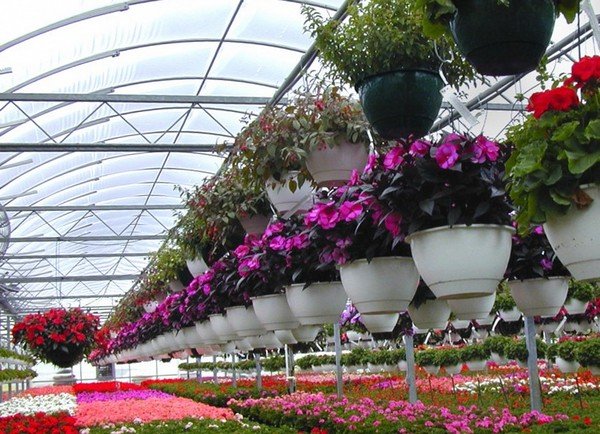
IMPORTANT! It is necessary to choose varieties cultivated for greenhouses, characterized by a rich taste and the correct form of berries, as well as their density and moderate juiciness.
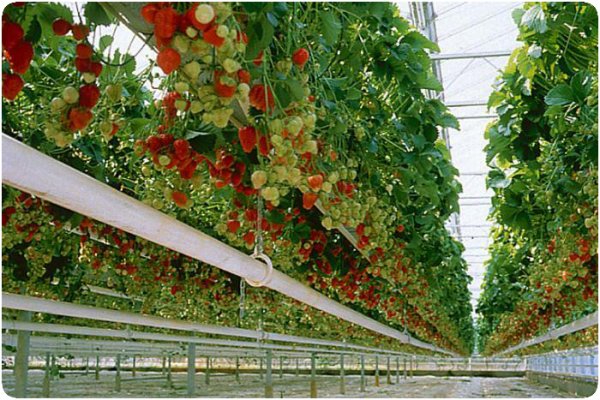
Main costs
Winter greenhouse, as a business requires substantial initial investment. These include:
- Buying or renting land. Price depends on distance. It is worth considering that far away farm increases transportation costs.
- Construction and equipment of the greenhouse. The most expensive option is a fully automated construction with climate control, drip irrigation, auto-ventilation, fogging and shading.
- Purchase of planting material.The most inexpensive option is to buy seeds. Podroshchennaya seedlings and cuttings for the stock of flowers are more expensive. In the future, in the greenhouse, you can allocate an area for the constant cultivation of seedlings for yourself and for sale.
- Registration of a farm or SP. It is necessary for entrepreneurs planning active work with retail and attracting employees. A small greenhouse on its own plot does not need registration, but it limits the ability of the farmer to find buyers for the products.
In addition to one-time spending farmer waiting and monthly expenses. These include:
- spending on heating, lighting and plumbing;
- purchase of fertilizers;
- fare;
- salary of employees.
Profitability
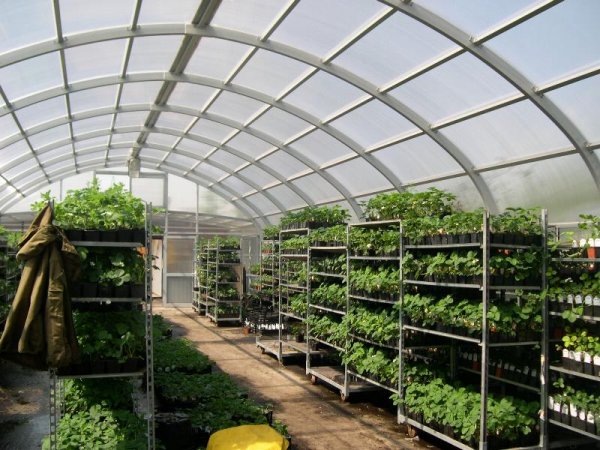 Experts estimate the average profitability of a winter greenhouse at 20%.
Experts estimate the average profitability of a winter greenhouse at 20%.
When breeding flowers and greenery it reaches 30% and higher profitability vegetable greenhouses - no more than 15%.
Payback periods depend on the size of greenhouses and the level of demand.
To get the maximum benefit from the greenhouse business, you must:
- Correctly choose a culture for growing. Undemanding greens are suitable for beginner farmers, flowers or strawberries for more experienced farmers. Vegetables should be grown only in regions with mild climate and low competition.
- Build a quality greenhouse, which will not require annual repairs. Buildings from the decommissioned window glass for business will not work.
Think over the issue of lighting and heating. - Choose cultivation technology. Soil technology is too expensive, the culture grown in hydroponics, do not like consumers. Compromise option - suspended growing or rack technology. Layers of soil are placed in tiers, each is equipped with lighting and irrigation system. Strawberries can be grown in special mats placed in vertical or horizontal plastic sleeves.
- Control the composition of the soil. Greenhouse business requires frequent replacement of the soil, with continuous cultivation and dense planting, it is quickly depleted. Fertilizers must be applied every 2 weeks.
- Use cultivated varieties for growing in greenhouses. They are resistant to diseases, differ in the shortened vegetation period and excellent yield. It is recommended to bet on 2-3 popular varieties, eliminating the constant experiments with new items.
Greenhouse business can be successful and provide the owner with a constant profit. In order not to be disappointed, it is important to analyze your capabilities long before the start, draw up a detailed business plan and think through the issues of product sales.
Year-round greenhouse seems to many only myths, and its existence is unreal. And yet, you can do such a greenhouse with your own hands; many gardeners simply don’t undertake this job because of the difficulties that they will have to meet on their way to the desired. In the modern world there are all the amenities and necessary materials for the all-season greenhouse to become a reality. We make a little effort, and, having found a little patience, you can later grow vegetables in this greenhouse all year round.
Types of year-round greenhouses
Greenhouse for year-round cultivation can be of different types.
- The most widely used devices are glass and polycarbonate. The side walls of such greenhouses are warmed, because they are built in two layers, between which an air layer is supposed to protect against cold. Experienced Gardeners prefer polycarbonate due to its high strength. The roof of such a greenhouse does not collapse even in case of heavy snow. A device made by hand from the above materials requires good heating, but it is quite possible to do without additional lighting, because the light penetrates through the transparent walls and the roof.
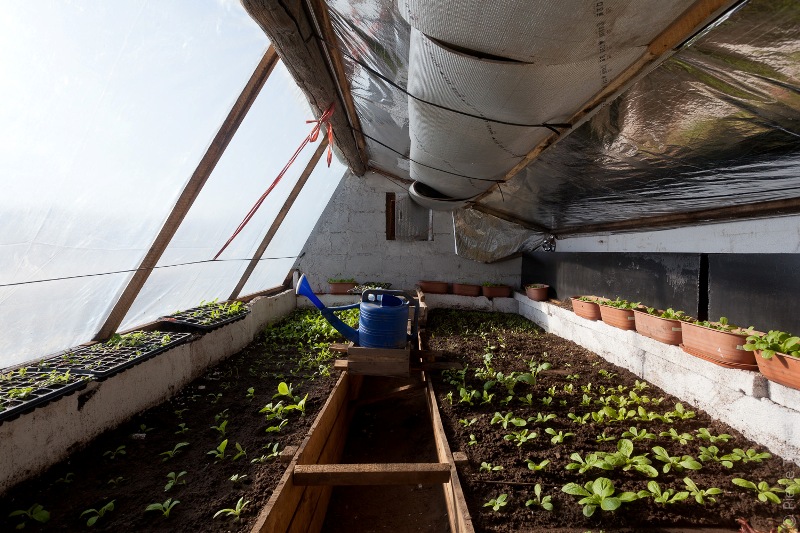
- Another type of year-round greenhouse is a mixed construction with foam concrete walls and a polycarbonate roof. Here it will not be necessary to supply the device with heavy-duty heating, since the foam concrete retains heat well. However, it will be necessary to install additional lighting, since such a greenhouse is illuminated only through a transparent roof, and its walls create a shadow. If there are no lighting fixtures in the building, then only shade-loving crops can be grown in it.
- The least popular for all-season use is a semi-underground greenhouse. It is a pit over which the roof rises. The advantage is that this device is below the level of freezing of the earth, maintaining the temperature in it will not be difficult, and will have to spend only on lighting. Disadvantages are expressed in the fact that such a greenhouse can be built only where there is no groundwater. In addition, for additional security, it is necessary to provide the building with waterproofing equipment.
Making a transparent greenhouse do it yourself
In view of the fact that the year-round greenhouse from polycarbonate is the most popular, it is first necessary to figure out how to build this particular greenhouse model. If you plan to grow vegetables and greens in it in the winter, it is best to install the structure on the foundation and place boxes with earth in it. Effective heating will be infrared lamps.
So, in order to build a polycarbonate greenhouse with your own hands, you will need a foundation, in addition, you need to build two-layer walls. You will also need foam blocks, concrete, materials for insulation, pipes made of steel for the erection of the frame, cellular polycarbonate, mounting tools, a shovel, a circular saw and materials for facing.
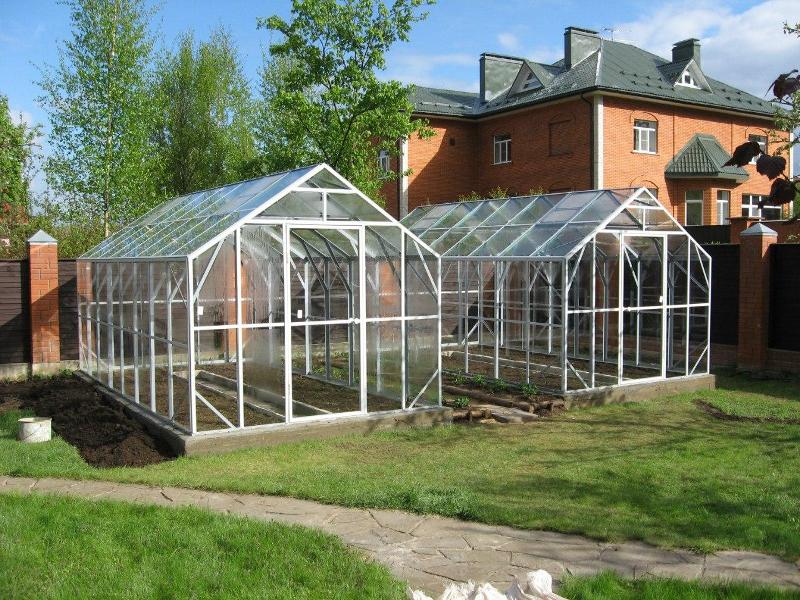
It is not necessary to build a very strong foundation, since the device that will stand on it is not very heavy. For the base, dig a 50 cm pit, and then around the perimeter, form the base of the foundation using foam blocks. Elements are fastened with cement.
Make sure that the height of the base of the foam blocks turned out to be at least 10 cm above the ground level.
Next, you need to cover the bottom with a layer of sand in 20 cm, then from pebbles or rubble - in 25 cm. This will be the basis for the floor, which you can do at your discretion from concrete or tile. After move to the construction of the frame. In order to protect the vegetables in the greenhouse all year round, it is best to install a steel frame. It is strong enough and will withstand any winter bad weather.
If you can not buy a finished frame, you can build it with your own hands from unnecessary steel pipes that you have. If you purchased a ready-made base, you only have to assemble it. This is not very difficult: it will only be necessary to fasten the elements with nuts according to the enclosed instructions.
When building a frame with your own hands out of pipes, calculate the position of the rods so that the polycarbonate sheets have to be cut as little as possible. The dome of the greenhouse should be arcuate. However, without serious skills of building greenhouses, it is almost impossible to make polycarbonate bend with your own hands right, therefore it is best to build a gable dome.
In order not to be mistaken in which side to put polycarbonate, find the manufacturer's marking on the sheets. Be careful, because the error will lead to low stability of the greenhouse and will deprive it of thermal insulation, as a result of which the cultivation of vegetables will not be crowned with success.
Connect with special thermal washers. Mounting should start with the inner layer. If small gaps form at the joints, seal them with a sealant the same as polyurethane foam. It is also recommended to cover the greenhouse from the inside with a thermally insulating foil coating for the winter.
Proceed to the heating system and finish only after installing the frame and polycarbonate plates.
Year-round mixed greenhouse: stages of construction
To grow vegetables all year round, you can also build a greenhouse of a mixed type, that is, a greenhouse, whose walls are made of foam blocks, and the roof is transparent (glass or foam carbonate). As mentioned earlier, polycarbonate is much more convenient, since it is easier to work with it.
Growing up in a greenhouse is good, but ... the first step is to build a foundation. A very good option would be a strip foundation that goes into the ground by 50 cm. Before you start building a greenhouse, you need to let the foundation stand for at least 3 months to avoid subsidence along with the finished greenhouse.
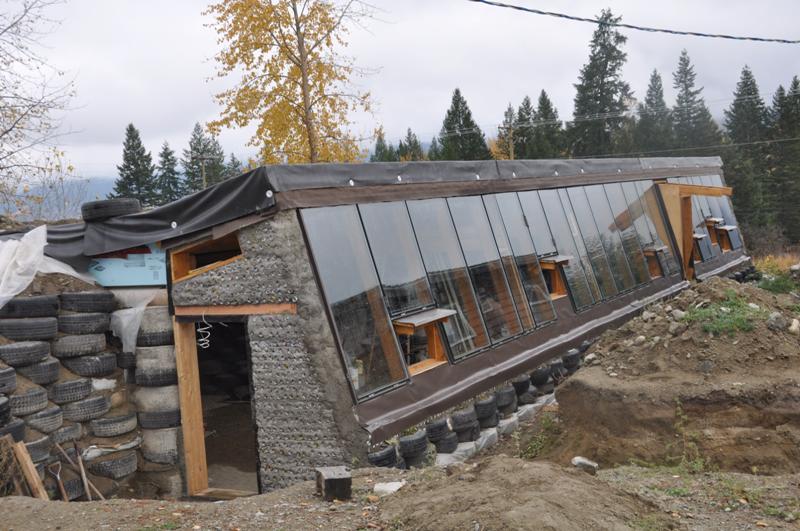
After this period, you can build foam block walls. They must be at least 2 m in height so that a person can stand at full height in a greenhouse. Inside the wall should be finished with plaster. Then you can take up the roof. First form the metal rafters. As soon as a strong frame is equipped, start using polycarbonate.
In the case of a mixed-type greenhouse, it should be fixed in a special way: the first layer of polycarbonate is placed on metal rafters. Metal profiles are fastened on top of it, and then the second layer.
On such a roof, the snow does not melt in winter, since the heat loss of the mixed greenhouse is virtually absent. It means that growing it will give good results, and you can simply clear the snow from the roof if necessary.
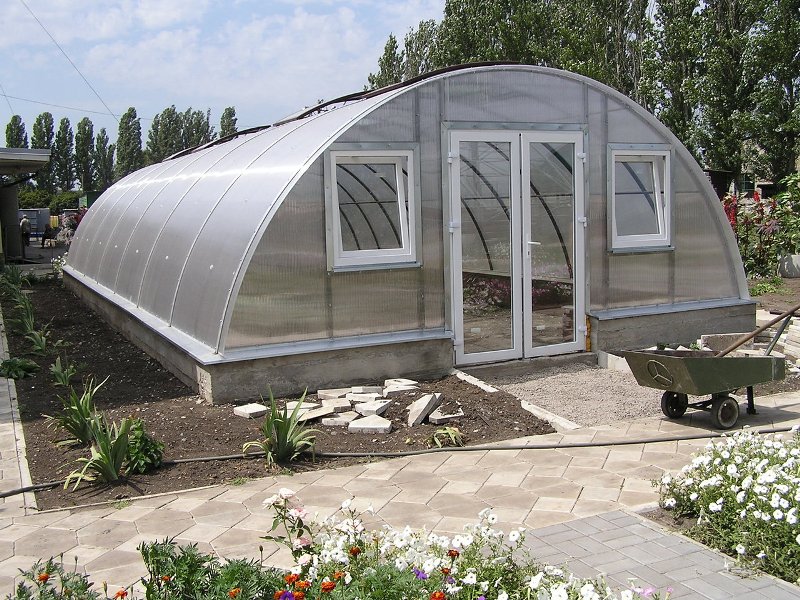
After laying the polycarbonate roof, the joints between the sheets and the walls need to be equipped with a plastic ridge, and from the inside sealed with assembly foam. As in the previous case, with a transparent greenhouse, the inside of the walls should be covered with foil foil for additional thermal insulation. Outside the wall is painted with white paint. This is done so that the light repelled from the surface.
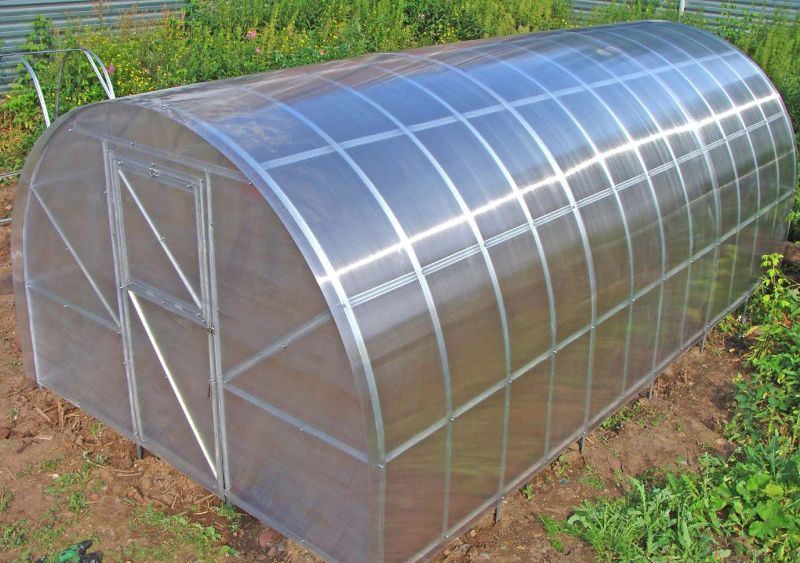
Heating greenhouses
This statement is quite reasonable, since plants, as it is known, without heat can neither grow nor produce crops. Unfortunately, it is not always possible to carry out heating in the greenhouse from the house itself. However, there are other methods of supplying greenhouse heating. The most common and convenient are electric radiators, infrared radiation, convectors, heaters.
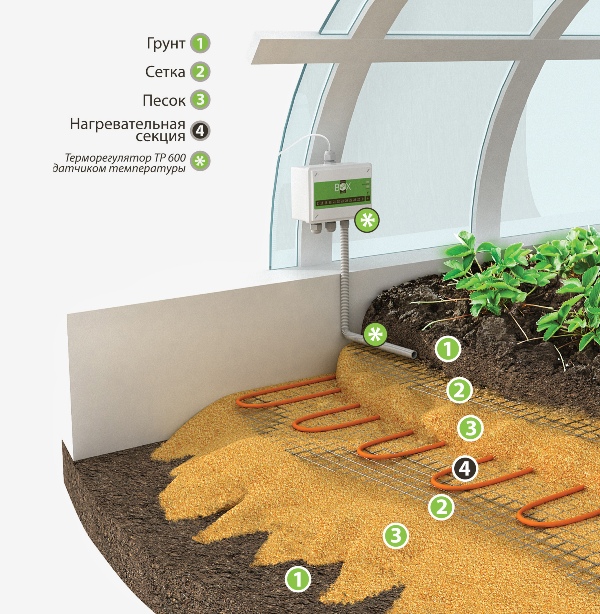
Infrared devices will be a reasonably economical and efficient option. They not only provide plants with heat, but also provide a source of light that is also necessary for growth. vegetable crops. It is reasonable to place the infrared equipment under the ridge so that light and heat are evenly distributed throughout the space in the greenhouse.
Simple year-round greenhouse (video)
Greenhouse lighting
Another important point is the lighting. Additional light is especially necessary in the winter season, since the light day in winter is very short and it is not enough for plants for normal development. The best options for an additional lighting system are fluorescent lamps or LEDs because of their efficiency. Such lamps must be installed directly above the boxes with plants so that the seedlings grow in a straight upward direction.
Thus, following the advice, you will be able to build a reliable structure without any problems, and then the greenhouse will serve you all year round, providing delicious fresh vegetables.
Gallery: year-round greenhouses (15 photos)
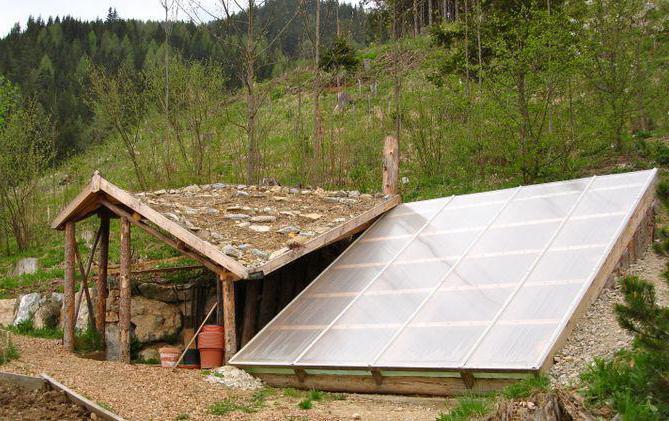
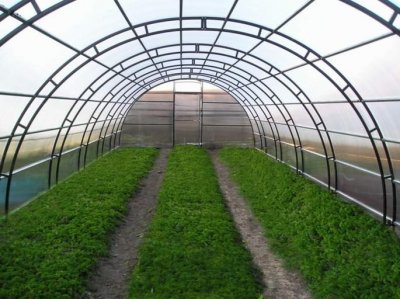
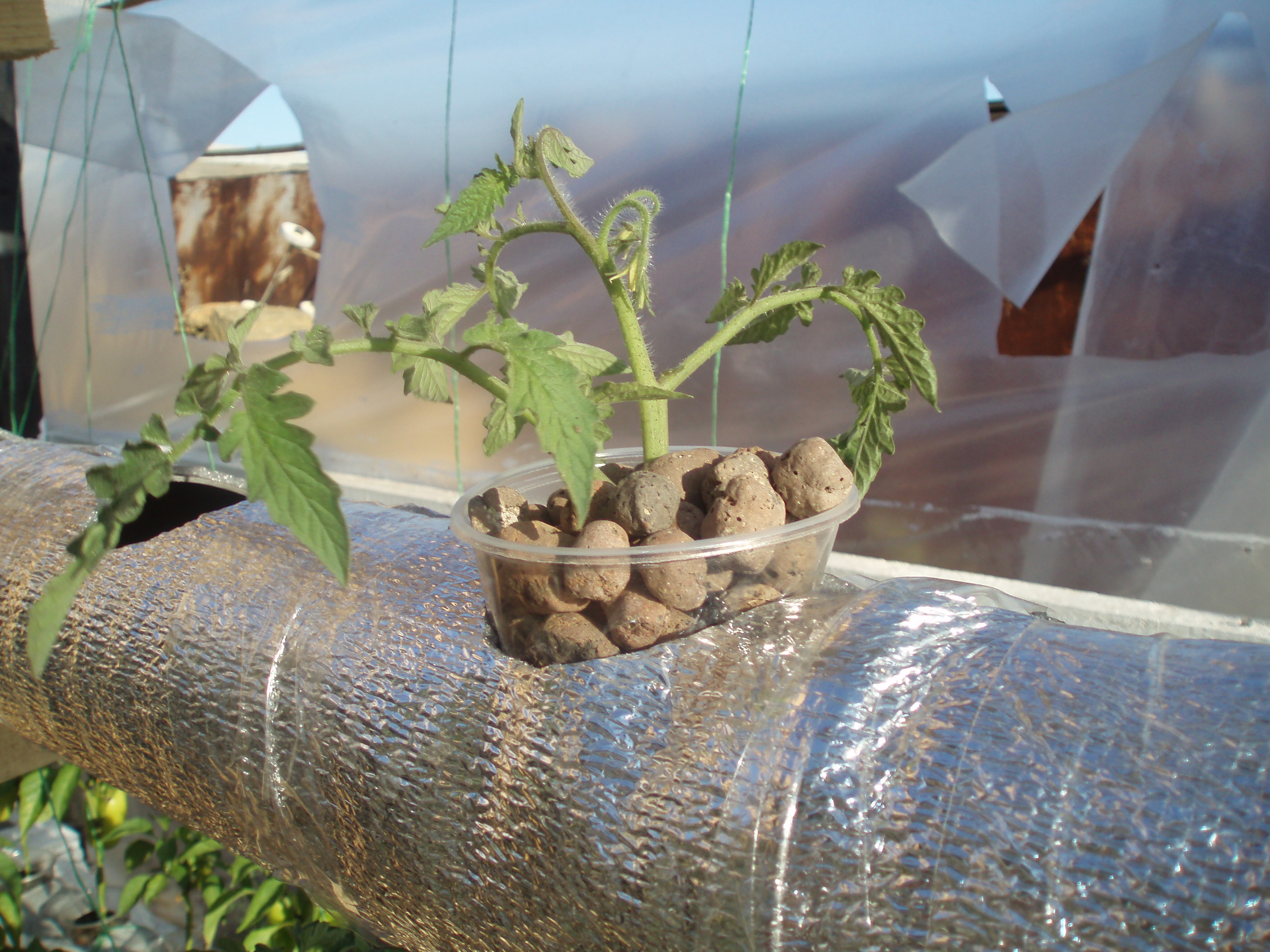
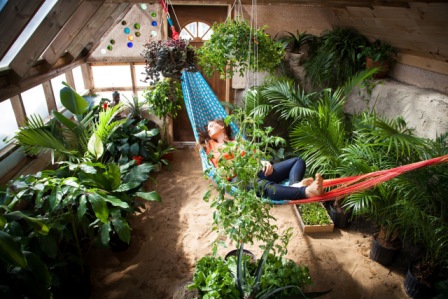
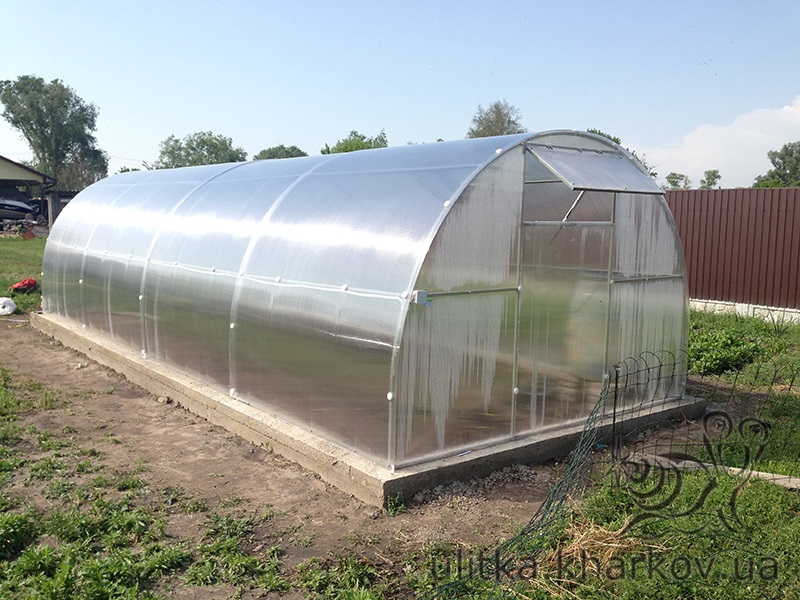
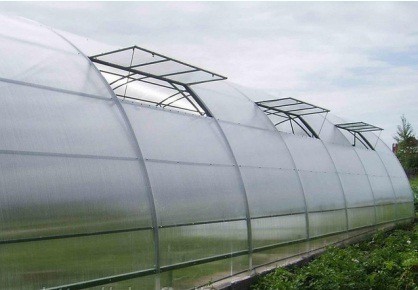
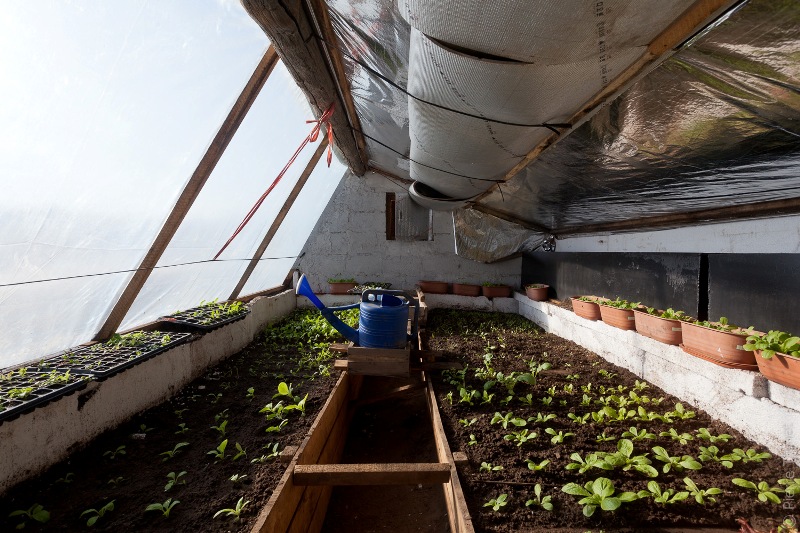
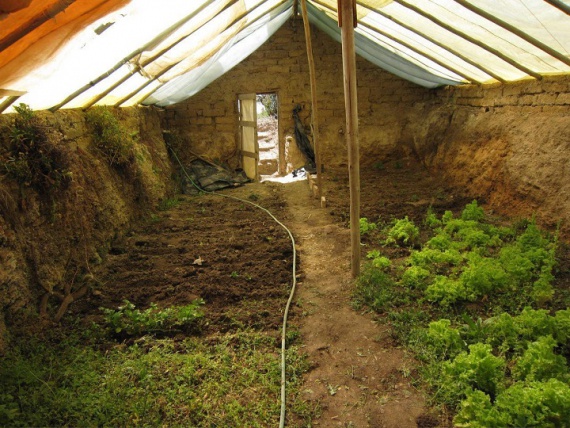
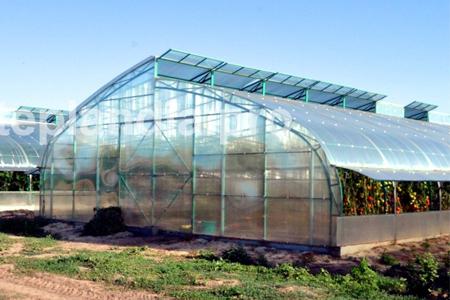
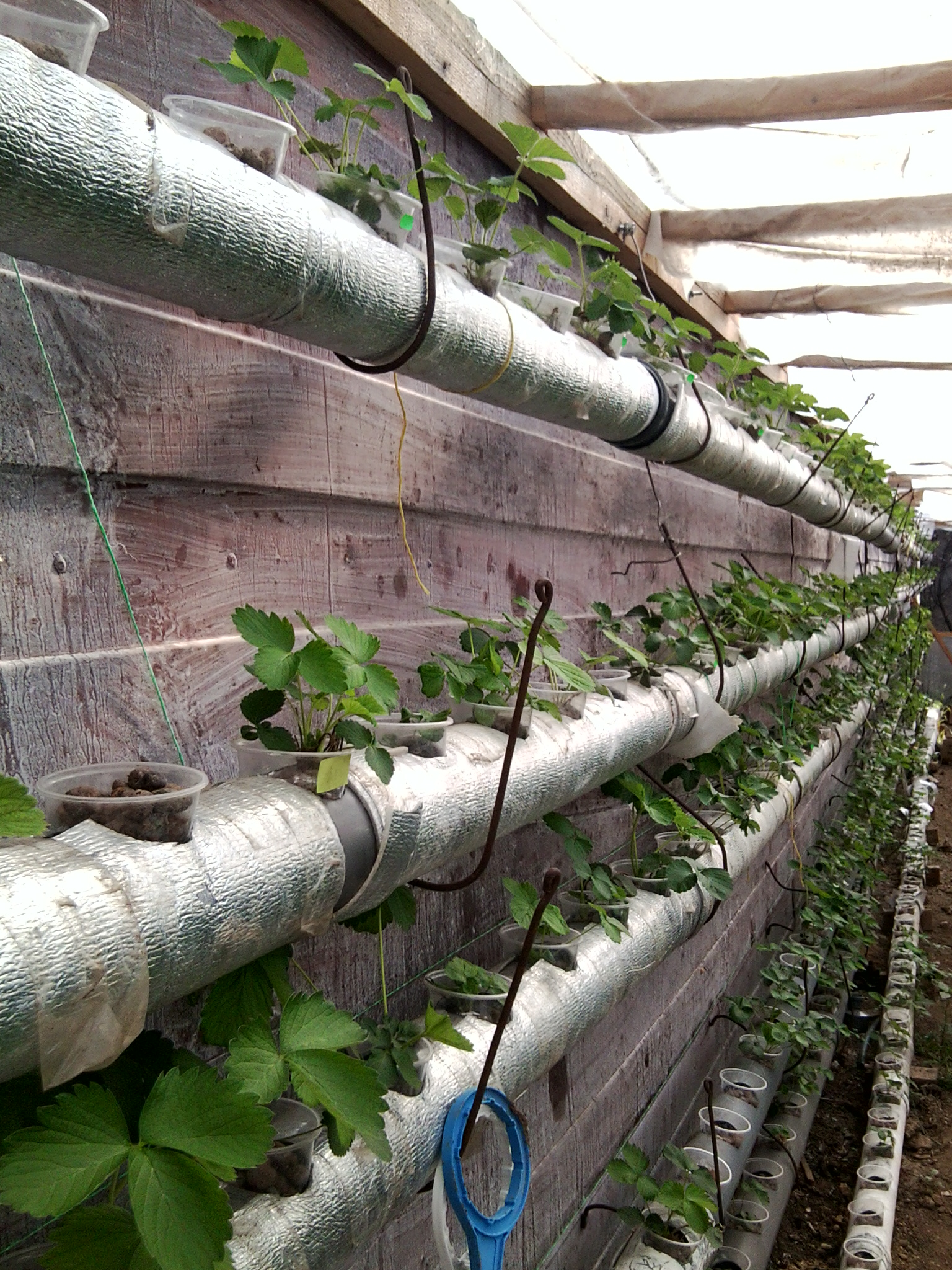
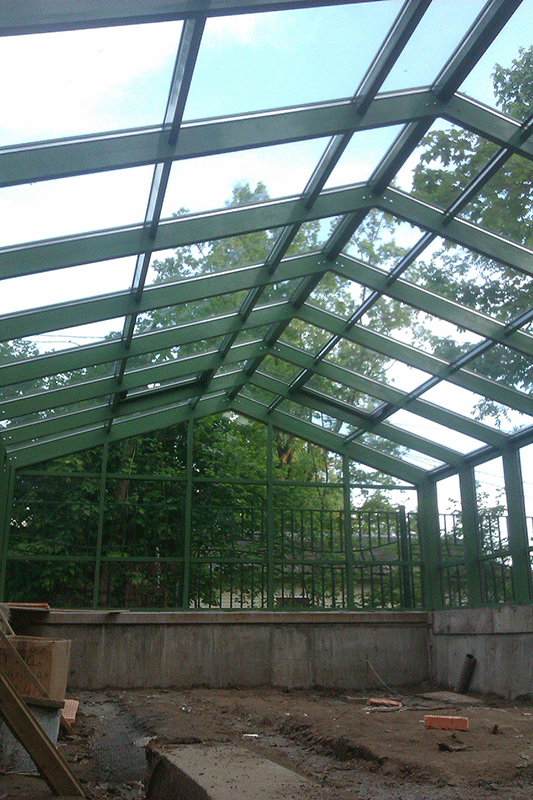
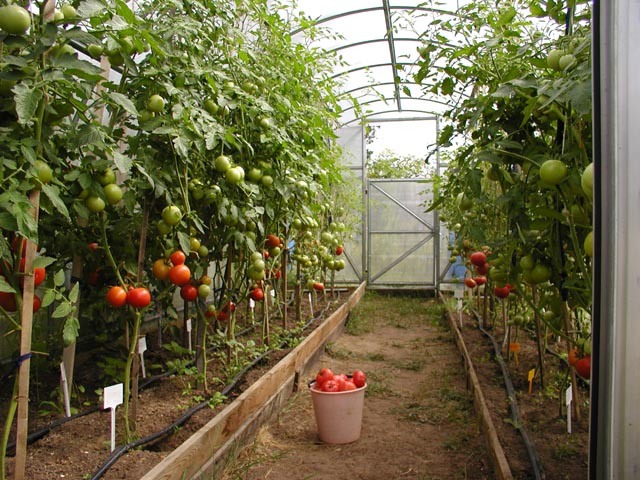
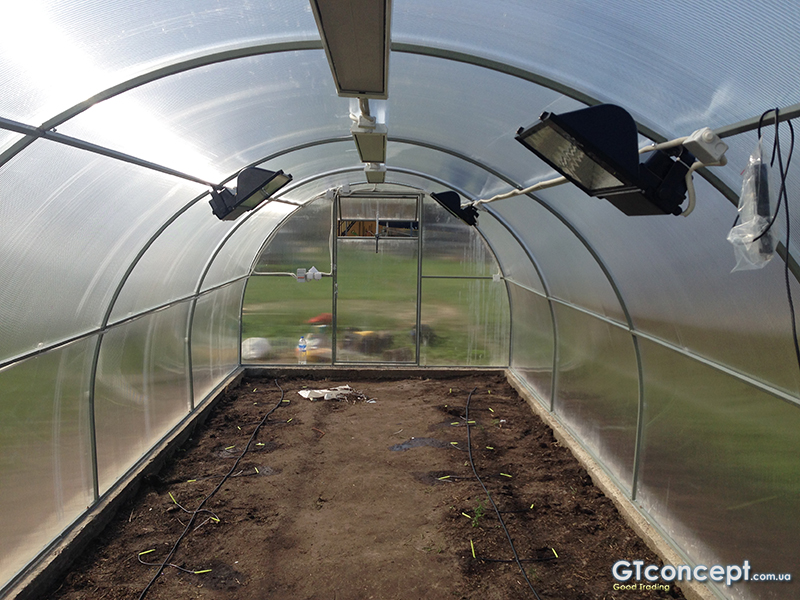
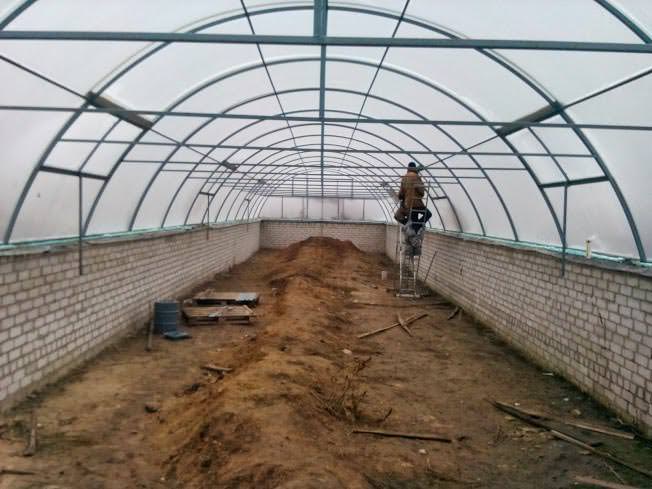
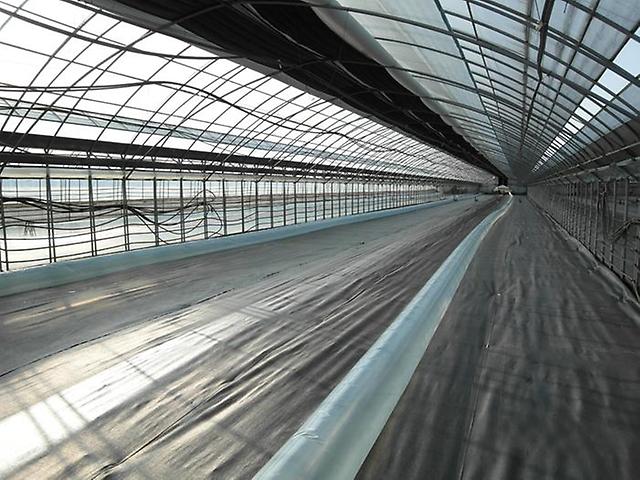
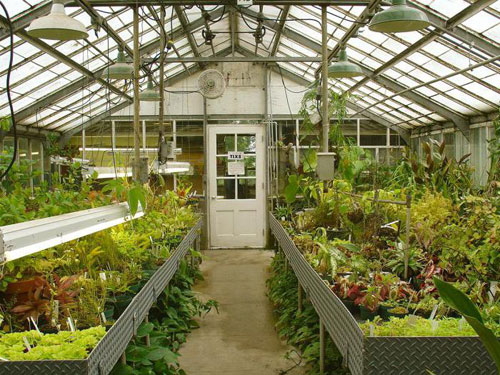
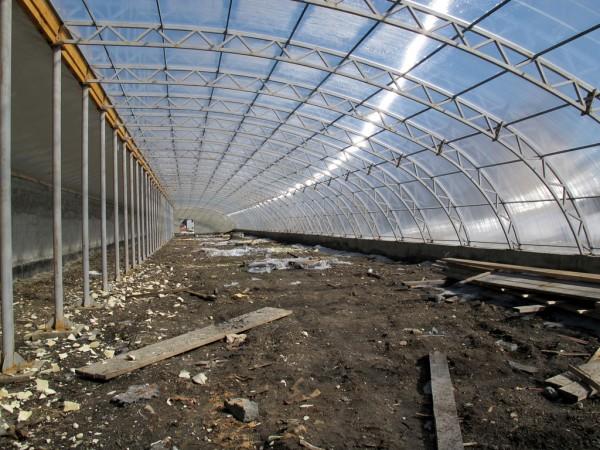
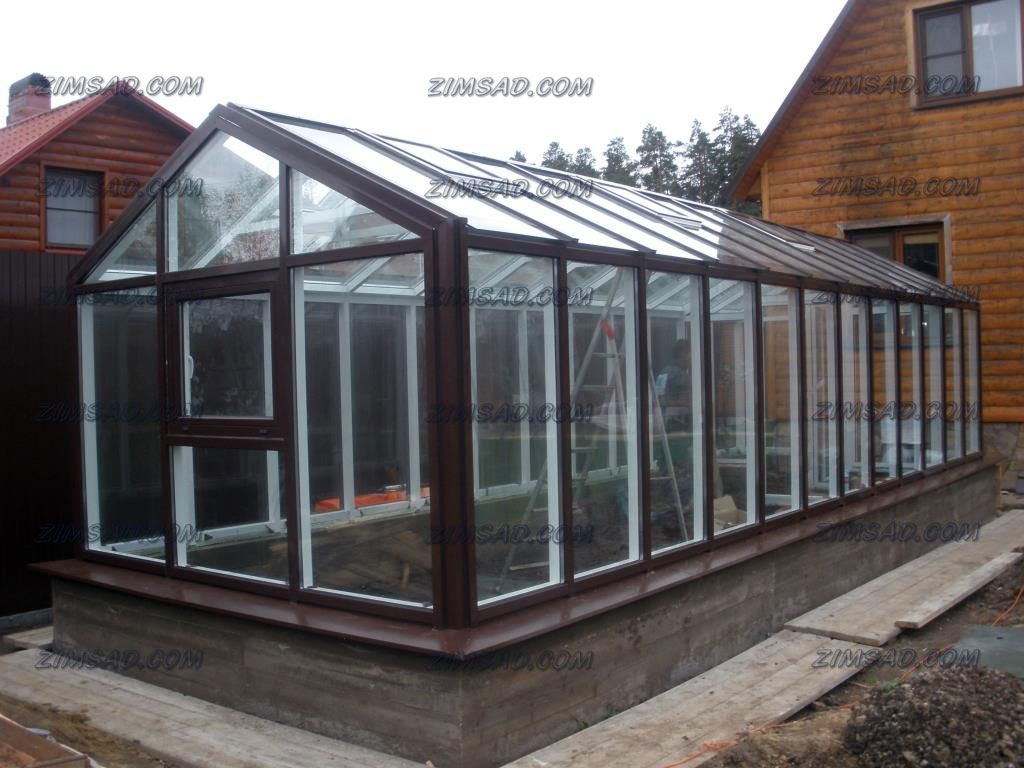
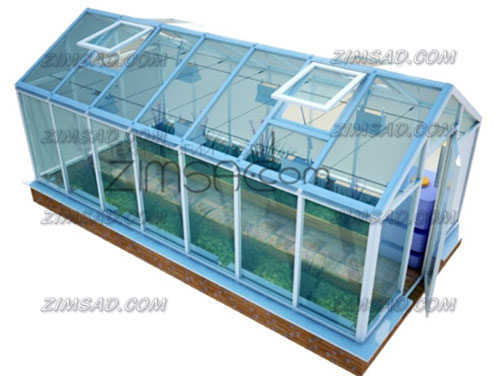
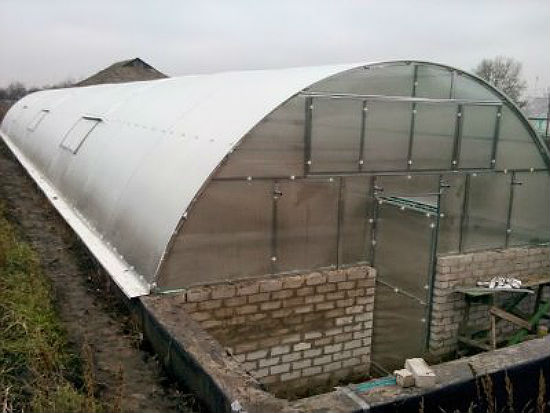
Many gardeners would like to grow fresh vegetables all year round. It is possible to come to the country house even in winter. The building is heated, with all communications. For vegetables, if you want to do their winter and spring cultivation, you will also need a warm home. Year-round greenhouse with heating can be equipped with their own hands.
This is the most important thing to start - choose a place correctly. At 30% location will determine the efficiency of the greenhouse.
Table. Options for choosing a place for the greenhouse
| Parameter | Description |
|---|---|
| Daylight | Of course, the stationary year-round greenhouse will have to provide additional artificial lighting, but why not 100% use the opportunities of nature. Plants should be provided with the maximum amount of daylight. Placing the greenhouse construction in the direction from west to east in an open place, you get the maximum sun for plants. |
| Wind | Cold winds can not only penetrate into the structure through any small gaps, but also, acting from the outside, reduce the temperature in it by 2-5 degrees. For young seedlings such a drop can be disastrous. Therefore, when installing the greenhouse, take care of its additional protection from the wind. |
| Water | Ideally, in the year-round greenhouse there is an automatic irrigation system. But if that is not available, hydro-communications should be located close for convenient and expeditious water intake and irrigation. Water temperature, especially in winter, also matters. Watering seedlings with cold water is unacceptable. |
| Approaches | Very few people pay attention to this parameter. However, the approach to the greenhouse should be wide and convenient. This will not only facilitate its construction, but also make operation comfortable and efficient. |
Selection of materials
What to build? There are many options. You need to choose such a material so that the structure lasts a long time, is durable, hermetic, economical. In this regard, the old film and glass classical structures, equipped with wood-frame structures, are finally a thing of the past.
Why film, glass and wood are not suitable?
Greenhouse made of wood and glass - photo
- Even a heavy-duty film can tear - heat will leak.
- In the frames and between them, gaps will surely form over time, through which the heat will also escape.
- The glass breaks and in one layer has a low heat transfer.
What materials to choose for year-round greenhouses?
- The frame structure can be used for installation of metal-plastic frames, provided that they are double-glazed.
- The walls of the greenhouse can be made of polycarbonate on a metal base.
- For year-round greenhouses suitable construction of brick.
Reliability, long service life, protection of growing crops - these are the main parameters by which the greenhouse building material is selected.
Building a polycarbonate greenhouse
Consider a polycarbonate construction, features of its assembly and the necessary tools and additional materials.
What is good for polycarbonate
This modern material has a lot of positive operational qualities.
- It has excellent thermal insulation properties.
- It has an amazingly flexible structure - it bends easily without breaking, which allows even arched structures to be mounted.
- 16 times this new material is lighter than the thinnest glass.
In polycarbonate structures, shaped tubes act as a frame. In addition to them, you will need:
- welding machine;
- polycarbonate sheets;
- bolts and sealant.
Assembly can be carried out for several hours, according to the instructions that are attached to the finished greenhouse.
Tip! Not all finished designs provide transom, but it is better to provide for them, the possibility of airing will protect the plants from overheating.
The frame is going to bolts. Sheets are inserted into the frame. Do not forget to make a roof at an incline (angle of 35 degrees is enough) to protect against the accumulation of snow. Places strips with open honeycombs on the polycarbonate are treated with sealant to minimize heat loss.
Features of the metal greenhouse
Doing metal-plastic constructions with your own hands is not the easiest thing. It will be most durable with specialists, so it is better to make a greenhouse frame to order in a construction company that specializes in the manufacture of such products. Plus, the frame will need double glazing, which is also better to entrust experts.
As a result, the full cost of such a year-round greenhouse will not come cheap. But this is the most realistic opportunity to grow greens and vegetables all year round.
Tip! When installing a metal-plastic glass greenhouse, one wall (northern) is recommended to be made not of glass and should be insulated.
The roof of such a greenhouse leans 30 degrees. It is preferable to choose a shed configuration.
Features of a brick greenhouse
A greenhouse made of brick, or as it is also called capital, is a real “home” for plants, where life is possible all year round. This is not even a greenhouse already, but a real greenhouse, in which you can grow not only vegetables, but also various exotic plants. Until now, despite the new modern materials, such as metal-plastic and cellular polycarbonate, the option of a capital greenhouse made of brick is considered the most reliable, proven, optimal, effective.
How to build a brick greenhouse
The construction can be done by hand, if you have at least the minimum skills of brickwork and other construction works. But even without labor costs, the greenhouse will require substantial financial investments.
It will take:
- brick;
- mineral wool;
- cement, sand;
- roofing material;
- boards, timber for rafters;
- windows, doors, gutters.
Features of the construction is that, unlike all other types of greenhouses, brick is a "two-room apartment" for green pets. The first room is a vestibule. It usually covers an area of 2x2 m or 2x2.5 m. Garden supplies, fertilizers, soil and other necessary things are stored in the vestibule, and a heating system (boiler, stove) is installed.
The basic greenhouse can be any area that you are able to master.
The partition between the two rooms is capital. It installs a door. The second door from the vestibule leads out. In the greenhouse, not only windows are made, but also transoms.
One more feature - for the capital greenhouse it is necessary to fill in the base, it is better tape.
Table. The main stages of the construction of brick greenhouse
Heating system
You can heat a greenhouse in different ways. From the simplest and most ancient - the furnace, to the new and modern infrared equipment and heat guns. Each system has its own advantages and disadvantages.
Table. Characteristics of greenhouse heating systems
| Type of heating | Specifications |
|---|---|
| Applied in capital buildings. The simplest and least expensive method. Does not require complex structures. The furnace is installed in the vestibule. Chimney - around the perimeter of the greenhouse. Ventilation is necessary for the arrangement of furnace heating. Among the drawbacks - uneven heat supply, the need for constant monitoring, strong heating of the furnace surface, fire hazard. The gas generator solid-fuel furnace does not heat the walls. | |
| It can be installed in the greenhouse of any material. It is considered the most secure. You will need a tank with a boiler, a pump, pipes, water, electricity. The water is heated by electricity, distributed by the pump through the system, cooling down, returns to the boiler. This method provides not only the optimal uniform thermal conditions, but also the necessary humidity. But only specialists can install such a system. Operation also requires serious material costs. | |
| Alternative water. Gas heaters and burners will be needed, as well as pipes evenly distributed throughout the greenhouse. Gas is burned, heat is distributed indoors. There are several drawbacks, among which the basic is the need for constant monitoring to avoid gas leakage. Also need additional ventilation. This option is more economical than water, heating is carried out evenly, the room heats up faster. | |
| The most popular and sought after type. It can be applied in all greenhouses. There are many devices, including: convector batteries, cables, guns, heaters mats. Most systems are equipped with sensors, it is possible to adjust the modes. | |
| You should not even try to install the system with your own hands - it is mounted only by professionals at the time of building the greenhouse structure. Heating is excellent, uniform, fast. Condensate does not accumulate (as happens in winter with all other systems). But there is a possibility of air drying, so it is recommended to install humidifiers in parallel. |
What vegetables are grown in the greenhouse all year round
In a heated greenhouse, you can grow absolutely any vegetables, herbs, berries, flowers, and even exotic plants. But if there is only one greenhouse on the plot, and you give preference to vegetables, you will have to choose up to three vegetable crops and as many green crops.
Vegetables
From traditional vegetables for year-round cultivation is usually chosen:
- cucumbers;
- tomatoes;
- pepper;
- chinese cabbage;
- radish;
- salads.
Greenery
From spicy green crops are grown:
- dill;
- parsley;
- cilantro;
- basil;
- green onions.
Pepper - you can sow and grow with any crops.
Tomatoes - grow well with onions and radishes.
Cucumbers - prefer radishes, lettuce and all green crops.
Greens - can grow with all cultures.
Tip! Cucumbers with tomatoes and cabbage and parsley in the neighboring crops is undesirable.
Planting seedlings in the greenhouse
The time of planting the seedlings that grew in the rooms on permanent place growth in the capital heated greenhouse depends on the time you have chosen for sowing. For successful planting seedlings there are certain rules.
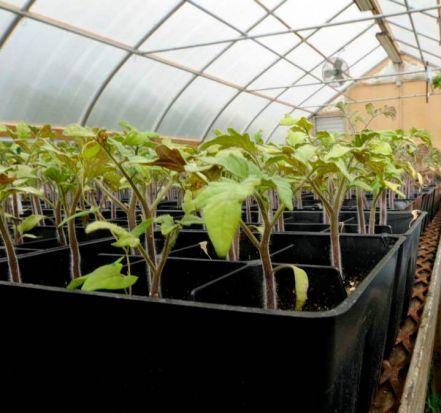
Caring for plants in the greenhouse
In the greenhouse, which year-round works on the "production" of fresh vegetable products, plants need very careful care.
The first important condition is soil preparation. Vegetables grown out of season in the greenhouse, will make increased demands, especially to the soil. It should be lightweight, fertile, with a high concentration of substances needed by plants.
In the composition of the greenhouse soil the following components are required:
- manure;
- turf;
- peat;
- straw (sawdust);
- sand;
- carbohydrate and nitrogen containing fertilizers.
The second condition - feeding. Vegetables and greens should be regularly fed during the entire cycle of growth and fruiting.
The third important component of care is watering and moisture regime. Preferred drip irrigation or fine shower (for some crops). If it is not possible to install an automatic watering system with regulation of the temperature of the water supplied, check that its temperature is not lower than the ambient temperature.
About heating is described in detail above. It is worth noting that in conditions middle band heating year-round greenhouse with different intensity will have at least seven months a year.
An important care event is weed control and soil loosening. Ground crust is dangerous for all garden plants, but it especially harms seedlings and seedlings in the greenhouse, where the air gets to the plants less than in open ground.
Loosening greenhouse soil, depending on the composition of the soil, often begin before the emergence of seedlings (when sowing crops with seeds). If the seeds have not yet risen, but the crust has already formed, of course, it must be destroyed to facilitate the emergence of seedlings to the surface. Loosening before germination is carried out between rows, to a depth of no more than 5 cm, with a light ripper.
When the main crops sprout, or after planting in the greenhouse seedlings, all tillage combined with weeding and carried out after watering. Loosen the soil closer to the stem of the plant, but so as not to destroy the side roots.
Tip! Vegetable crops, such as tomatoes, peppers, cabbage, cucumbers, are loosened immediately after transplanting deep, up to 7 cm. As the lateral roots grow, the depth of loosening decreases, and the distance from the stem increases.
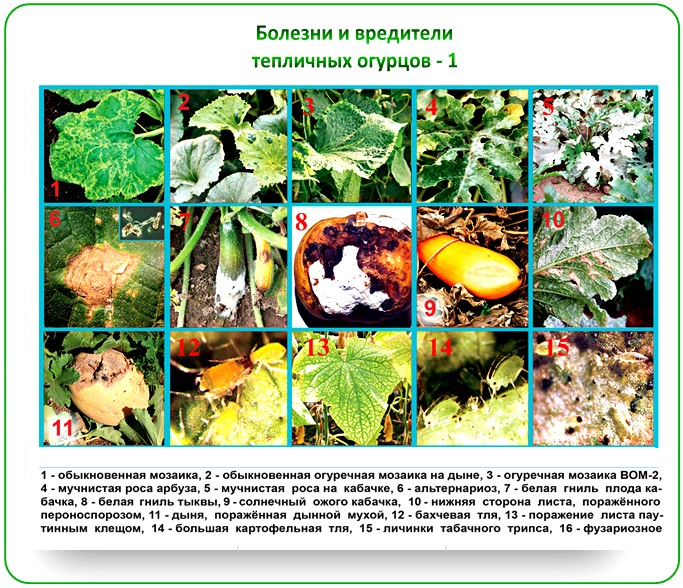
Diseases of cucumbers in the greenhouse (continued)
Also in the year-round greenhouse it is necessary to pay special attention to the prevention of diseases of vegetable crops, to carry out measures to treat the diseases that have arisen, to promptly remove the remains of vegetation, obsolete lashes, stalks, leaves, and after harvesting, during the preparation of the greenhouse for a new planting cycle, disinfect it.
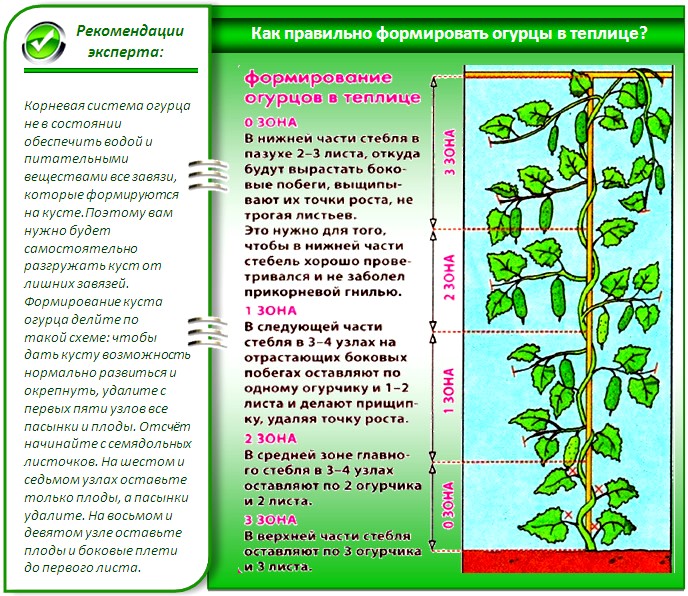

Growing vegetables in a greenhouse is sure to bring excellent results if you follow all the rules for caring for seedlings and planting them in protected ground. The reward will be juicy and healthy fruits, vegetables and herbs from your own site all year round.
Video - How to build a large winter greenhouse
If you are an avid dacha, you probably wondered how the year-round greenhouse is built.
General device year-round greenhouses
When the greenhouse will be built year-round with heating, you can take for the main dimensions presented in the article. However, the dimensions of the building will depend on their own preferences, the number of grown seedlings, as well as the free space on the site. In the example, a greenhouse whose width is equal to 3450 millimeters will be considered, while the length will be equal to 4050 millimeters. Ultimately, you will be able to get a total area of 10 square meters of shelving, on which you can grow seedlings. If you plant in pots with a diameter of 100 millimeters, you can have 1000 seedlings from this area. Year-round greenhouse of this type will consist of a recessed room, inside of which racks are installed. The roof should be made transparent, whereas the use of two-layer polycarbonate is recommended as a covering material. As mentioned above, the building should not be buried if there is high groundwater in the area, but in this case it will be necessary to dust the building with the help of the soil on the outside of the wall. The length can be increased if necessary, for this you can add sections. The ridge bar should be lengthened with a build. The connection is carried out in a half-tree with a bar, which has a similar section.
Dimensions and Supports
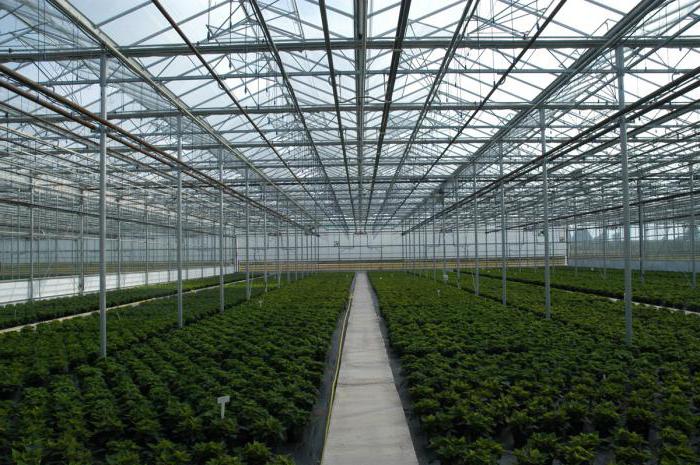
If you will build a year-round greenhouse, then at the point you will need to install a support, the last of which should have the form of a triangle. The ridge support is necessary for maintenance of a bar. It should be noted that the support should not come into contact with the polycarbonate coating. The supporting part has the qualities of strength, but does not prevent movement inside the greenhouse. This addition is required only when the length of the greenhouse is more than 4000 millimeters. If the structure has a more impressive length, the supports should be installed every 4 meters. As for the corner elements, they must be made of square bar, the side of which is 100 millimeters.
The construction of walls and insulation of the greenhouse
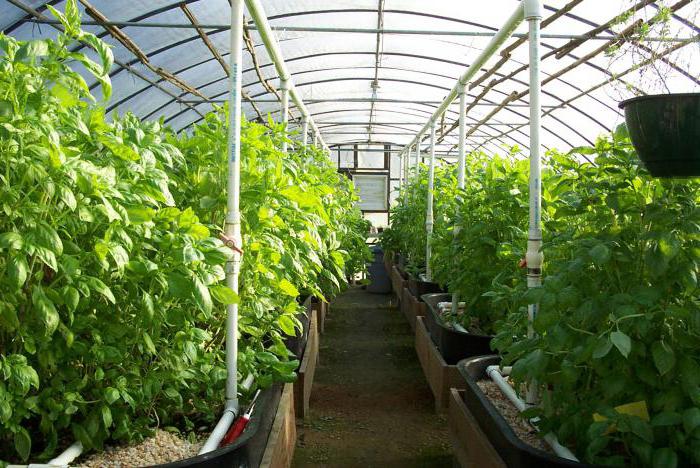
If you will build a year-round greenhouse, then on both sides of the support you will need to sheathe with the help and the resulting space should be filled with a heat insulator. In order to make the construction cheaper, it is recommended to use round timber, its diameter can vary from 120 to 150 millimeters. Slab is often used for wall cladding. The space inside the walls is insulated, for this you can use sawdust, expanded clay or slag. If the first option is applied, then you need to add to the main ingredients. This will be able to scare off rodents. Shelves should be installed along the side walls; 600 millimeters should be pulled back from the floor surface. In their manufacture should be used boards.
Ditch and installation of support
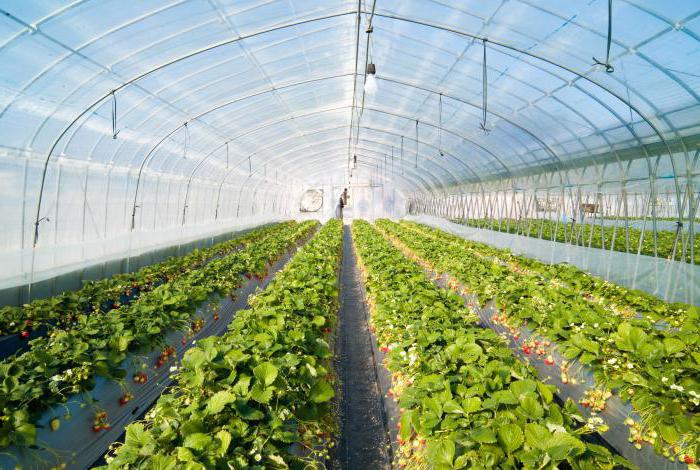
If you decide to build a year-round greenhouses with your own hands, then first you need to dig a pit, the depth of which is equal to 600 millimeters. The width and length may be greater than the greenhouse itself. At the bottom should make the markup, which will be the installation of supports. As soon as you decide on the markup, you will need to dig in support, while you need to go deeper by 500 millimeters. At a height of 1020 millimeters from the surface of the earth, you need to pull the string, which is leveled with a level. It will help to install all the supports correctly. Next is filling. To do this, use the ground, which, after laying carefully tamped.
Installation and sewing of walls
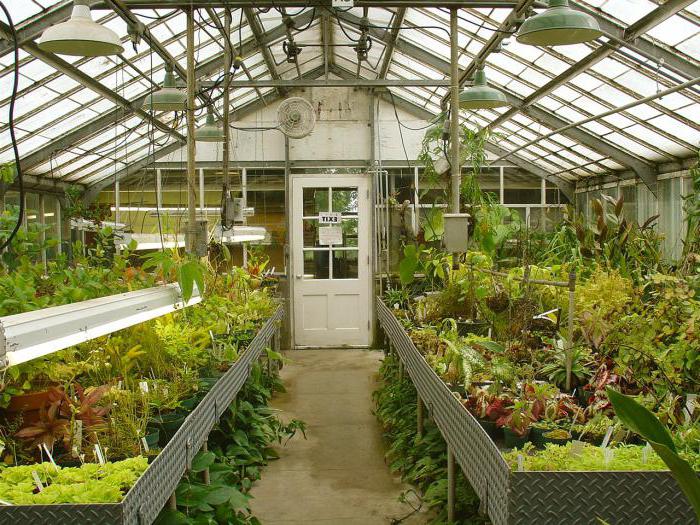
Year-round greenhouses with their own hands lined up according to a certain technology. It involves the alignment and further covering of the walls. Recent manipulations must begin at the bottom. This must be done simultaneously from the inside and the outside. As soon as you complete this work, you need to cut the ends of the boards that extend beyond the supports with a hacksaw. In the corners of the greenhouse, from the inside, bars should be nailed to the boards, which have a square section with a side of 50 millimeters. Install them vertically. They will be fixed lining the rear and front walls.
Laying insulation
Roof structure
Greenhouses for year-round cultivation, as a rule, have a roof, made on the basis of the frame. Rafters should be connected in half of the tree, the jumper is nailed so that the distance in the lower part was equal to 3450 millimeters.
The jumper is considered a temporary part, so it must be installed in such a way that afterwards it can be removed. We should not forget that it is not necessary to hammer nails to the very end, it is necessary to leave a gap of 7 millimeters. This will make it easier to remove the jumpers.
Final work
Greenhouses year-round use suggest the presence of the truss system, which is nailed to the support. After this jumper can be removed. Ridge bar should be mounted under the rafters. Now, front supports are brought under it. Their size is 880 millimeters. Greenhouses for year-round use with heating suggest at the last stage the installation of the furnace, which is preferable to be located in the vestibule.
And you know that if you have a summer cottage, you can earn an extra amount of money on it. But only for this you need to really get down to business professionally. What will you grow, choose yourself. You can cucumbers, tomatoes or strawberries. Or maybe you have long dreamed of growing flowers? In any case, without a greenhouse you can not do.
We buy polycarbonate greenhouses
To get the maximum benefit, you need to grow plants year-round. And that means you need polycarbonate greenhouses, which are most suitable for such purposes. If you are really interested in growing vegetables or flowers all year round, then don't listen to anyone's advice, believe me, glass and polyethylene structures are, in fact, yesterday.
What is the advantage of polycarbonate greenhouses over glass and polyethylene structures?
For a start it is worth saying that glass is a fragile thing and has poor resistance to wind and snow, especially if you take into account the Russian winter climate. But polyethylene have insufficient thermal insulation and, just like glass, poorly resist precipitation. And if we say that year-round greenhouses - it is a whim, it is not so. After all, if we take into account the climate of many Russian regions, then winter in some areas reigns up to six months and what, wait for favorable weather?
For good harvest This is not enough. And if you take into account that you want to earn some money on this, then just half a year does not bode well for the development of your agricultural business. That's why many people prefer polycarbonate greenhouses, which are suitable for year-round cultivation of not only vegetable crops and flowers, but also fruits.
Polycarbonate greenhouses, why they?
So, what is the advantage of a polycarbonate greenhouse over other analogues? It:
- special technology on which the material is created;
- high quality thermal insulation characteristics;
- high stability and strength of such a structure;
- they are not afraid of any climatic conditions; they tolerate rain, snow and wind perfectly;
- well able to keep warm.
Thanks to all the above listed characteristics, it is possible to grow any crops year-round in a greenhouse today. All you need is your desire and perseverance. But due to the fact that this design has good heat-retaining properties, you can still save on heating, which must be present in the greenhouse.
Get greenhouses from us - we will pick up any size and modification
Here you can choose any polycarbonate greenhouses suitable for your site. Any shape, modification or size. You yourself do not know what will be better for you, then just call and our consultant managers will help you deal with various models and find exactly what suits you most.
Our greenhouses are not only high-quality, but also aesthetically fit into your summer cottage or country plot, allowing you to use this territory with maximum efficiency. That will necessarily affect the increase in yield, and, therefore, profits.
What else do you need for good yields?
In addition to acquiring the greenhouse itself, you still need to think about many things. And in what order will the plants be planted, and the technical aspects, for example, where the path will be in your building and more. You just have to think about everything in advance, and not at the last moment.
Lighting seedlings
This system is simply vital for a greenhouse that will work year-round. After all, during the cold period, daylight hours are too small, and it may not be enough for proper photosynthesis of seedlings. And then it is necessary to help them in this plan, artificially prolonging this day.
To carry out additional illumination, we need lamps that have a special light spectrum suitable for transplanted plants. What capacity of such a system is needed - this is calculated from the size of the greenhouse. You can automate such a system by using a timer, as well as light sensors. So it is possible to set up such lighting exposure under any kind of culture. It should also be said that such a system is necessary not only in the year-round construction, but also for a seasonal glass greenhouse.
Heating system
Heating is a must for a greenhouse that will be used all year round. And such a system is designed to ensure that the temperature regime, which is necessary for grown plants. Either electric or water radiators are installed. You can set the required temperature mode with the help of a thermostat that is installed on the device for heating - all the work of this system is in automatic mode.
Drip irrigation system
Also for the greenhouse from polycarbonate, which will be used all year round, necessary drip irrigation system . It is designed so that without human participation the supply of moisture to the roots of seedlings is made. Water is fed from the water supply system to the tank where the heating device with an automatic system was installed to maintain the desired temperature for the crops grown.
Then, not without the help of the pump, which is connected to the timer, and then creates the necessary piping pressure, thanks to the supply hoses and water flows. And then, thanks to compensated droppers, the moisture gets to the roots of the plants. So without your participation, you can submit the required amount of moisture to plants.
Soil heating
Such a system is designed to maintain the required temperature regime of the root system of crops grown during the cold period. How does such a system work? Very simple:
- first, to a depth of about 35 centimeters, you need to lay a cable for heating, which is removed initially to 50 cm of soil;
- then the sand pad is filled up to five centimeters;
- the grid lays down for protection;
- then you can lay the cable for electric heating;
- again we fall asleep five centimeters of the soil;
- the protective net is laid again;
- further we fall asleep with fertile soil 35 cm;
- now you need to install a sensor that will show the temperature of the soil;
- we install a regulator for temperature control;
- we feed it to the power grid;
- we set the desired soil temperature for a particular crop.
Enter your number, and we
call you right away






